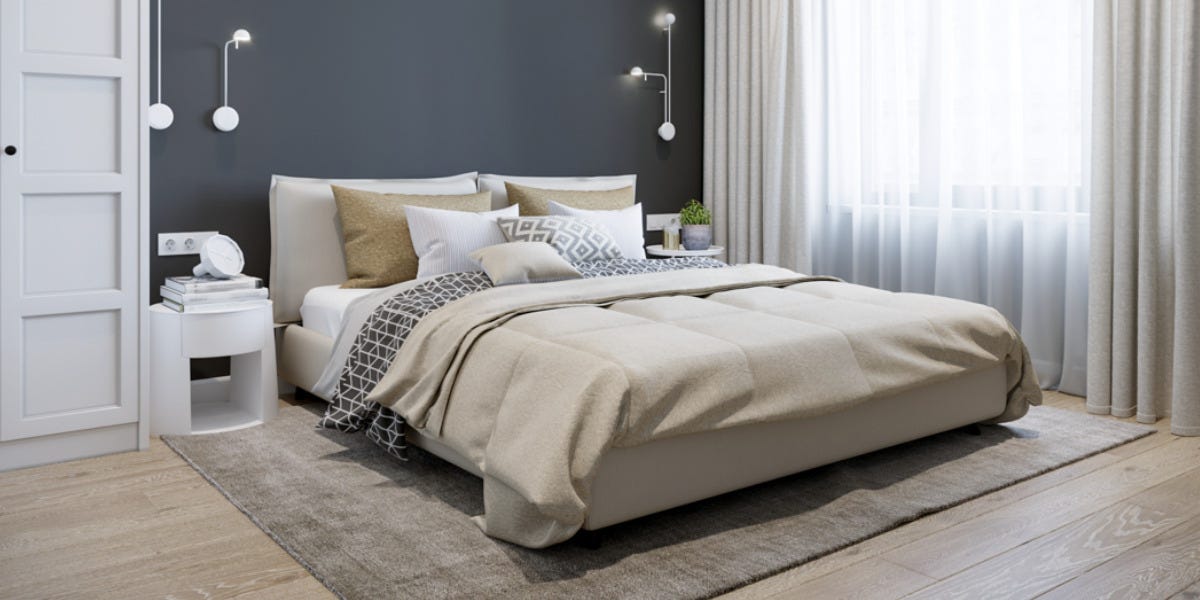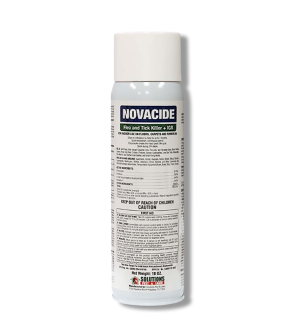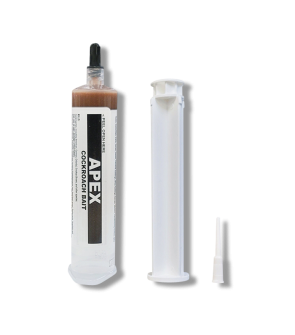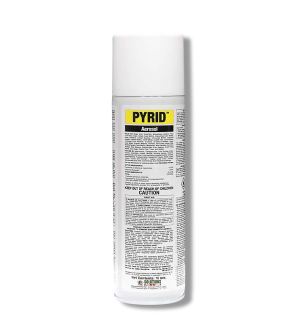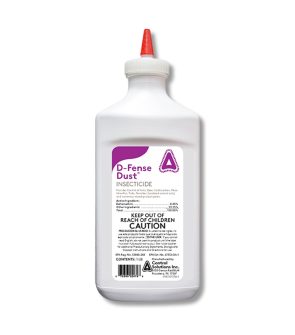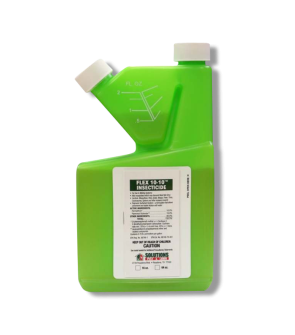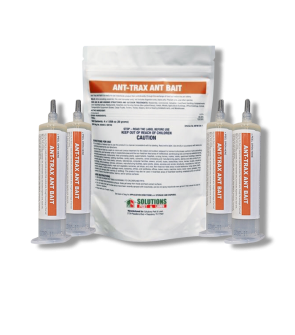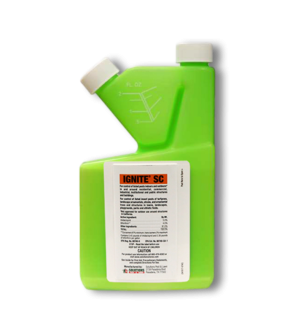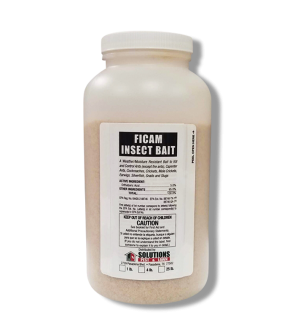Insects in Bedroom
Most Effective Products
Common Insects in Bedrooms
With more than a million species of insects, pinpointing which one is infesting your home’s bedroom can be a daunting task. When certain types of pests infest a mattress, you may notice bites on your skin or itching, and redness. But are there pests in other parts of your room?
Turns out though, there are plenty of other insects that more subtly creep into your room. The most common bugs in bedrooms are ants, bed bugs, cockroaches, fleas, and spiders. Each pest poses their own set of risks from structural issues to even your own physical health.
Sometimes you have very little to go on, making it hard to know what products to buy or which pests you are facing in your bedroom. For full-proof bedroom pest control, learn more about each pest listed in this article.
If you are not seeing any of the pests you have read here, then contact our customer service team by phone or email for professional tips.
Ants
Ants can show up anywhere in your home, but one of the most frustrating places is your bedroom. Although you may not realize it, the smallest of food crumbs or aroma can attract them to your room, furniture, or bed.
Besides their bites or stings, what makes ants a problem is the fact they live in large groups called colonies.
Identification

Since numerous species of ants can invade your lawn we will focus on general characteristics. This way you can separate ants from other species of insects.
Depending on the species, ants will vary in color from black, brown, red, or yellow. They will have a 3-body segment, a set of antennae, six legs, and are wingless. Only the ants intended for reproduction aka swarmers will have wings.
Inspection

Depending on the species, they are mostly found within walls, voids, baseboards, or door and window framing in bedrooms.
Treatment
Step 1: Secure Food and Water Sources
 One common misconception is that ants are only attracted to foods left out in the open like trash cans. However, any type of food crumbs in bedding, floors, or on furniture can attract ants.
One common misconception is that ants are only attracted to foods left out in the open like trash cans. However, any type of food crumbs in bedding, floors, or on furniture can attract ants.
Deep clean any counters with warm water and vacuum floors and under furniture to remove any food residue. Wash bedding and take out trash regularly to minimize odors and ant activity in bed.
Remove or wash dirty laundry left over in your room to make sure they dry fast. Sweaty clothes or towels contain salt, sugar, and moisture, all of which is attractive to ants.
Water buildup around window frames or in bedroom walls can attract ants quickly, so consider repairing the weather-stripping around windows and other leaking plumbing issues immediately.
Since ants look for water, you should also fix water leakage from pipes attached to your bedroom and other rooms near it.
Step 2: Seal Openings
 Ants can travel from room to room or from the outside in through cracks, crevices, or voids in walls, floors, and doors.
Ants can travel from room to room or from the outside in through cracks, crevices, or voids in walls, floors, and doors.
To keep ants out of bedrooms make sure to fill all openings with caulk.
Step 3: Set Up Baits Indoors
 The best way to get rid of ants in bedrooms is to apply baits.
The best way to get rid of ants in bedrooms is to apply baits.
Ant-Trax Ant Bait is a ready to use gel bait that uses an effective combination of food baits and pesticides. Together, this product makes the ants want to eat it leading to complete ant colony elimination.
Determine how much Ant-Trax Ant Bait to use by measuring the square footage of the treatment area. To do this, measure the length and width of the treatment area in feet then multiply them together (length X width = square footage).
Apply 4 drops or 0.006 oz. of Ant-Trax Ant Bait per square yard of treatment area.
Make applications in areas not accessible to children and pets by applying rounded spots or thin beads into cracks and crevices or as a spot treatment.
Place this product close to foraging ants trails, and areas of activity such as under baseboards, seats, and cracks or crevices in walls.
Bed Bugs
Although bed bugs do not require serious medical attention, they can cause a great deal of itching and restless nights due to anxiety or with their biting activities.
They can easily hide in areas as thin as a credit card and become resistant to insecticides making them a difficult pest to control.
Identification

They also have flat, oval-shaped bodies prior to feeding, two antennas, and six legs. After feeding, bed bugs still maintain their oval-shape, but appear more elongated.
Inspection

These pests hide in dark, tightly spaced and cracks and crevice areas near piping, box springs, backside of headboards, picture frames, joints of furniture, in electronics and electrical outlets, in closet, bed frames, carpeting, ceiling fans, desk chairs, around and under mattress, shelves, and cabinets in bedrooms.
Treatment
Step 1: Cleaning and Disinfecting

Vacuuming, especially with a crevice attachment in the folds of your mattress, bed frame, and box spring will remove a significant portion of the bed bugs.
You can also disassemble the furniture to better treat and vacuum them against bed bugs. Washing all clothing and other infested fabric items in your bedroom on a high heat can help kill bed bugs.
Enclose all washed items in plastic bags then dry on a high heat setting above 120 degrees Fahrenheit will remove bed bugs. For items you cannot wash, store them in the plastic bags and put them in storage for at least a whole year or steam-clean them.
Throwing away or moving infested items can worsen the infestation by spreading bed bugs to other parts of the house not previously infested. For this reason, leave things where they belong.
Step 2: Apply Flex 10-10 and Gentrol IGR
It's not enough to only clean furniture and clothing, but you will need to apply insecticides like Flex 10-10 and Gentrol IGR Concentrate.
Flex 10-10 is a synthetic insecticide concentrate that will work to eliminate bed bugs from bedding and furniture. Gentrol IGR Concentrate is an insect growth regulator that will prevent underdeveloped bed bugs from growing into reproducing adults.
Before mixing Gentrol IGR Concentrate, first treat your mattress only with Flex 10-10. Make sure to do this before mixing Gentrol IGR Concentrate since this product cannot be applied to your mattress.
After the mattress has been treated, you can then mix Gentrol IGR Concentrate and Flex 10-10 together to treat the bed frame, box spring, cracks and crevice of furniture, closets, carpet, flooring and along the baseboards of the bedroom.
A standard application of Flex 10-10 is 3.2 fl. oz. of product per gallon of water per 1,000 sq. ft. For severe bed bug infestations, you may use 6.4 fl. oz. of product per gallon per 1,000 sq. ft.
After treating your mattress with Flex 10-10, you may then apply at a rate of 1 fl. oz. of Gentrol IGR per 1,500 sq. ft. of surface area.
Step 3: Use Pyrid Insecticide Aerosol

Apply Pyrid Insecticide Aerosol in short bursts from a distance of 18 to 24 inches from the mattress, but do not exceed 10 seconds of spray per room. After treating the mattress, you will need to cover it with clean bedding and a mattress encasement before you go to bed.
Continue with treating the cracks and crevices in furniture of your bedroom with this product. Apply only to the tufts, seams, folds, and edges and underneath all areas, but do not apply to flat surfaces where human contact will occur.
Also, treat the cracks and crevices to all baseboards, moldings, beneath floor coverings and carpets, closets, shelves, curtains, and picture frames of bedrooms.
You may also spray any bed bugs you see directly with Pyrid Insecticide Aerosol.
Reapply every 7 to 10 days, as needed, until infestation is eliminated.
Cockroaches
Many people feel grossed out or frustrated when they see cockroaches in their bedrooms. They walk through drains, sewers, eat or spread feces as they travel, and spoil food. Cockroaches can be an allergy trigger as well to some.
In bedrooms, the most common cockroaches to be encountered are the German cockroaches, American cockroach, and smoky brown cockroach.
Identification
For a better visual reference take a look at the image above: On the left is the German cockroach, the middle is the American cockroach, and on the right is the smoky brown cockroach.
German cockroaches are light brown to black colored pests with two parallel dark lines running down behind their heads. Though they have wings, they do not fly; rather they run quickly to the next location. These small roaches measure no bigger than ½ an inch in length.
American cockroaches are shiny reddish brown colored roaches with a pale yellow or brown band around the edge of the pronotum. As one of the larger roach species, they measure to a large size of 1.5 inches or more. Both males and females have wings and have the ability to fly, but prefer to crawl.
Smoky brown cockroaches are winged roaches that are large in size at 1.3 to 1.4 inches, but smaller than the American roach. They have a dark, shiny brown to almost black coloration with no other distinctive lines or markings. Wings of this species are long and extend past the tip of the abdomen.
Inspection

They are most active at night and can be seen scurrying across floors, walls, or ceilings when the lights are turned on.
American cockroaches can be found near warm, moist spaces like clothes hampers, in heating ducts, wall voids, and cracks and crevices within floors, wall, and furniture in bedrooms.
Smoky brown cockroaches are mainly outdoor pests, but will come inside to find warm, humid environments such as attics, crawl spaces, and chimneys. They prefer to hide in undisturbed cracks, crevices, voids, and under or around sources of moisture.
These pests tend to shy away from places with a lot of people activity and will only travel to bedrooms to search for food or moisture. Since these roaches fly they will either fly or crawl across the floors or ceiling from each room.
Treatment
Step 1: Keep Bedroom Clean
Remove or minimize as much indoor food, water, and shelter as possible to control indoor roach activity.
Begin by wiping off all surfaces in your bedroom with warm water to wipe away grease or food residue. Wash and dry all sheets, pillow cases, and bedding on your bed to eliminate food and sweat aromas that may attract roaches.
Vacuum the carpet in your room or mop the floor as well. Next, address any moisture issues occurring near or in your bedroom by repairing weather-stripping around window frames.
If there is leaking plumbing, you will need to make the necessary repairs.
Step 2: Set Out Baits
Something like baits can help wipe out the cockroach infestation you are facing in your home and bedroom. For complete control, we recommend using a bait both indoors and outdoors.
For indoor cockroach infestations, Apex Cockroach Gel Bait is the best choice as it contains a slow-killing bait action formulated with 11 different food attractants to lure and kill cockroaches.
For outdoor cockroach infestations, use Ficam Insect Bait. This granule bait is weather and moisture resistant making it effective to control cockroaches and other pests before they enter your bedroom.
Before using Apex Cockroach Gel Bait make sure to store all foods in airtight plastic containers and wipe off surfaces near or around the treatment site with warm water only. Apply
To control small roaches like German cockroaches, you will need to apply 3 drops of Apex Cockroach Gel Bait, or approximately 0.0047 oz. per square yard.
To control larger roaches like the American cockroaches, you will apply 5 drops of product, or approximately 0.0071 oz. per square yard.
Place it in areas out of reach of children and pets such as in cabinets, shelves, cracks, crevices, under baseboards, around water pipes, and other voids where cockroaches may hide.
Apply Ficam Insect Bait as a perimeter treatment at the rate of 2 lbs. per 1,000 sq. ft. Create a band 2 to 4 feet wide around the exterior of the structure. Scatter bait in flower beds, leaf litter, wood piles, trash cans, and refuse areas as well.
Apply Ficam Insect Bait as a perimeter treatment at the rate of 2 lbs. per 1,000 sq. ft. Create a band 2 to 4 feet wide around the exterior of the structure. Scatter bait in flower beds, leaf litter, wood piles, trash cans, and refuse areas as well.
Step 3: Block Entry
Cockroaches are capable enough to crawl in the smallest of cracks or crevices. This means that any opening in your home's foundation or exterior walls are an open invitation to roaches.
The best thing to do against cockroaches is to seal all cracks and crevices with caulk and seal any gaps around window or door frames with new weather-stripping.
Fleas
Adult fleas and their larvae each pose their own set of issues. Flea larvae can remain dormant for up to 9 months, during this stage they are resistant to insecticides until hatched.
While you do not own a pet, simply traveling through areas with contact with animals can expose you to fleas.
Once present in your bedroom, you quickly find out how irritating their biting activities are and how hard they are to control since they lay up to 50 eggs per day.
Resulting in on-going flea activities, which will take time and patience to control.
Identification

Inspection

Treatment
Step 1: Thoroughly Clean
Since fleas multiply so quickly, a deep and thorough cleaning indoors is recommended.
Vacuum floors, rugs, carpets, and upholstery in your bedroom and other parts of your home to help remove fleas, eggs, and larvae. Steam cleaning your floor, carpet, rugs, and other fabric areas may be necessary if there is a heavy flea infestation.
Wash your pets bedding in hot water on a regular basis to help prevent fleas further.
Washing in hot water and vacuuming will stimulate some flea pupae to hatch early making them more susceptible to insecticide applications.
Step 2: Apply Novacide Flea & Tick Killer Indoors

Shake the can before use and hold it out from the floor upside down by 36” inches then spray a 100 sq. ft. area in 10 seconds.
Using a sweeping motion, begin spraying from the back of the house towards the front. People and pets should remain out of the treated area until the product has dried and the fumes have dispersed.
After the product has dried, vacuum the floor every day or at least every 2 weeks.
Remove pet bedding and replace it with fresh, clean bedding after treatment.
Spiders
Some of the most common spiders people will experience in their bedrooms include the wolf spider, brown recluse spider, or yellow sac spider.
Most of these spiders won’t bother you unless provoked, but depending on the species their bites can lead to serious health complications.
Identification
For a visual refernce take a look at the image above: On the left is the brown recluse spider, the middle is the yellow sac spider, and on the right is the wolf spider.
Wolf spiders are large, hairy spiders that measure from a quarter of an inch to over an inch. They have 8 total prominent eyes with 4 small eyes arranged below and 2 large eyes at the top. Colored a brown to gray coloration with various black markings or lines.
Brown recluse spiders are small, pale brown or yellow to darkish brown colored spiders. Measuring between ¼ to ½ inch long and have a violin or fiddle shape on the dorsum. They have 6 eyes arranged in 3 paris with a space separating them.
Yellow sac spider are small, light yellow or cream to lime green colored insects that measure ¼ inches long. They have 2 rows of eyes with 4 symmetrical eyes in each row. Their front 2 legs are longer than the rest of its legs.
They have a cephalothorax that is darker than the rest of its body and a faint dark stripe running lengthwise down the abdomen.
Inspection

Brown recluse spiders will hide in secluded holes provided in your bedroom from unused shoes, inside boxes, under furniture, unmade bedding, clothes hanging in closet or on ground, or in crevices around baseboards and window moldings.
Yellow sac spiders will hide or create their nests in open sight. In your bedroom this could be in the corners of walls and ceilings, behind picture frames, beneath or behind furniture, or along baseboards.
Treatment
Step 1: Keep Bedroom Clean

To correct this, begin by decluttering your bedroom by pulling objects away from the wall and picking up shoes, clothes, and boxes from the floor.
Dust all surfaces and the corners of bedrooms. Wash the surface of all furniture and floors in your room with warm water to remove food residue.
After dusting, sweet and vacuum the floors, under furniture, and corners of room to eliminate attractants for other insects they prey upon.
Wash all bedding, clothes, carpets, rugs, and other fabrics to take care of any spiders that stumbled into these sites and limit activity.
If your bed sheets and covers are left unmade for an extended amount of time they might decide to explore these areas. Washing and keeping your bed made makes it less inviting to spiders.
Step 2: Seal Openings
Spiders and the insects they eat seek openings so by sealing these entries you help to prevent them from appearing in your bedroom.
Sealing all openings, cracks, and crevices such as in the wall, ceilings, and around window frames with caulk will prevent them from gaining entrance.
Outdoors, you will need to seal openings in the wall, foundation, around window and door frames as well. Replace weather-stripping around window and door frames to eliminate gaps for spiders to travel.
Keeping your bed stands lifted off the ground will help to prevent spiders from nesting underneath it.
Step 3: Spray Spiders Directly

Shake the can thoroughly before application. Position Pyrid Insecticide Aerosol 18 to 24 inches away from the spider then spray, but be sure not to exceed 10 seconds of spray per room.
Treat harborage areas such as behind baseboards, cabinets, door frames, corners of rooms and windows. Open and thoroughly ventilate the treated area before reoccupying.
Key Takeaways
How to Get Rid of Bugs in Bedrooms?
- To get rid of bugs in bedrooms you will first need to clean your bedroom and home, seal openings in and around the house, then make appropriate insecticide applications indoors.
What Are the Bugs in Your Bedroom
- The most common bugs in bedrooms are ants, fleas, cockroaches, spiders, and bed bugs.
Why Are There Bugs in Bedrooms
- Depending on the pest, most insects will come into your bedroom to find food, water, and shelter. Sometimes pests like bed bugs will feed on people and vice versa fleas on pets.
